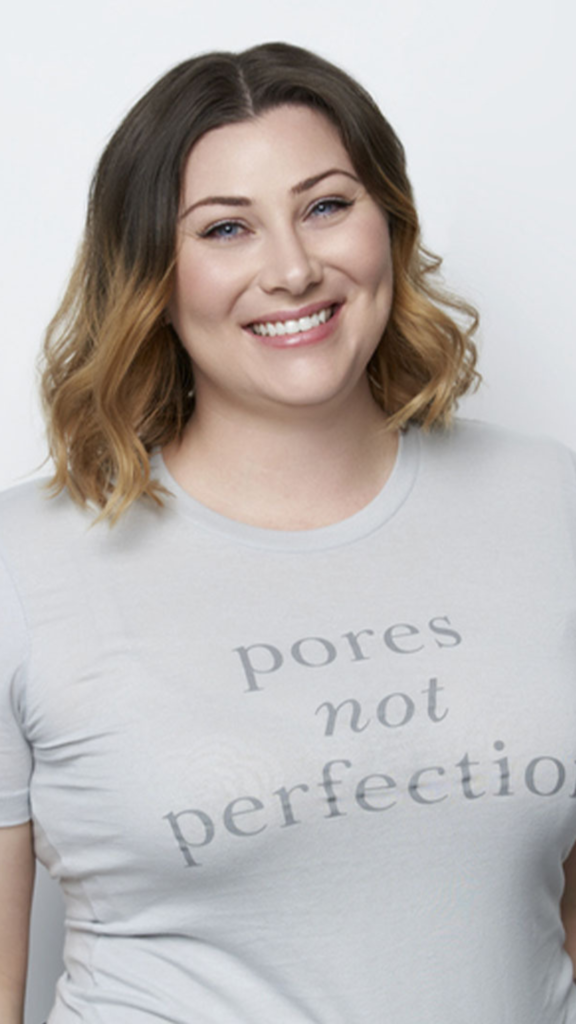Treating blackheads can be easy if you have a good understanding of what they are. You also need to know a few basic tips.
What Are Blackheads and Who Gets Them?
Blackheads are non-inflamed acne lesions that have formed from microcomedones. Acne, or retention hyperkeratosis, is a condition in which there is an accelerated production of skin cells within the pores, and, at the same time, increased retention of dead skin cells. This process forms a microcomedone, of which there are two types: open and closed. Blackheads, specifically, are open comedones; open comedones are called blackheads because microcomedones oxidize and darken when they encounter oxygen. You don’t have to consistently experience acne to get blackheads. They are extremely common, even for people who generally have clear skin.
Pore-Clogging Ingredients
While acne can be naturally occurring, using pore-clogging ingredients can exacerbate this skin condition especially when it comes to blackheads. It can be hard to avoid pore-clogging ingredients since they are in everything from shampoo to dryer sheets, but it’s not impossible. There are several pore-clogging ingredient lists that can be found online but they may differ depending on how strict the author chose to be. Pore-clogging ingredient lists utilize the comedogenic scale, which measures the likelihood of any given ingredient clogging the pores on a scale of 0-5. Avoiding ingredients rated a 3 to 5 on the comedogenic scale can help reduce the occurrence of blackheads. Some common pore-clogging ingredients include shea butter, algae extract, seaweed, and sodium lauryl sulfate.
0 – not likely to clog pores
1 – low likelihood
2 – moderately low
3 – moderate
4 – fairly high
5 – highly likely to clog pores

Contribution by Alex Hernandez
Alex Hernandez, a Licensed Esthetician of 6+ years, serves as the Lead Educator at Face Reality Skincare. In her role, Alex oversees professional educational training materials, protocols, and classes on a national level. Additionally, Alex supports other key departments including marketing, R&D, and Face Reality’s Acne Clinic. Alongside Laura Cooksey, owner and co-founder of Face Reality Skincare, she learned how to educate clients and professionals on the treatment of acne using the brand’s safe and effective signature adaptive protocol. Through diligent practical training and the completion of Laura’s personal training, Alex became a Face Reality Certified Acne Expert in 2018. Since then, Alex has worked with hundreds of professionals and acne clients in her esthetics career and is a daily witness to the impeccable results achieved using Face Reality Skincare treatments and protocols.
How to Combat Blackheads
For those who are truly acne prone, their entire skincare routine should be curated to manage their acne. Properly hydrating and exfoliating the skin are the best ways to keep the pores free of debris and to manage blackheads. There are two forms of exfoliation to consider, and they should be chosen based on a client’s skin type and acne type.

Lash enhancing benefits for longer, thicker looking lashes.
GrandeLINER Liquid Eyeliner with Lash Enhancing Serum
Treat your lashes to a boost with this 2-in-1, ultra-black liquid eyeliner infused with lash enhancing serum. Its fine-tip brush makes it easy to create a smooth, precise line to your desired thickness and style no matter your eyeliner skill level.
Learn more about the benefits of GrandeLINER Lash Enhancing Serum
Chemical Exfoliation
Salicylic Acid
Salicylic acid is a beta hydroxy acid that has been a staple acne product for several decades. Due to its comedolytic and lipophilic properties, it is an excellent choice for clients on the oilier side who are experiencing blackheads. This ingredient is used in many different formulations including cleansers, toners, and serums. Clients may experience some dryness while adjusting to salicylic acid. It is best to not add so many different forms right away, but instead opt for one product containing the ingredient.
L-Mandelic Acid
This gentle alpha hydroxy acid makes an excellent choice for clients of varying skin, acne, and Fitzpatrick types. This ingredient can also be found in a wide variety of products and while it is typically gentler than salicylic acid, it should also be integrated slowly into a home care routine.
Retinol
Out of the 3 forms of chemical exfoliation, this one can be the most aggressive. Retinol is best used for severe and stubborn noninflamed acne where there is no inflammation present.
Physical Exfoliation
Scrubs
A scrub can be added to a client’s routine to provide a more aggressive exfoliation that will physically slough away dead skin cells. The frequency of use should be based on the severity (number of lesions) of blackheads. Adding a gentle scrub to a daily routine can be extremely helpful for a severe number of stubborn blackheads on the face. If your client is experiencing a milder case of blackheads, a scrub can be added to their routine 2-3 times per week to help manage them.

